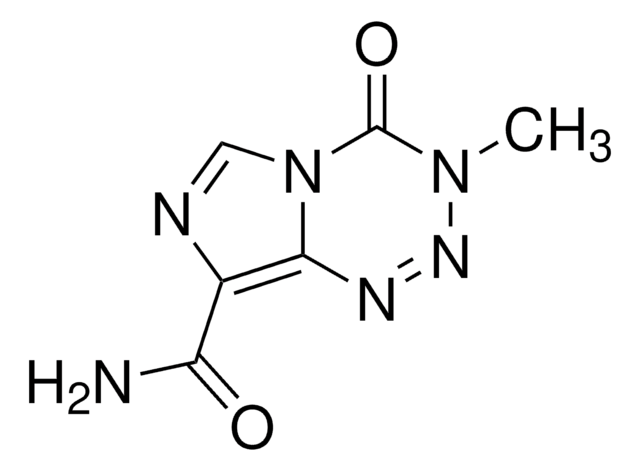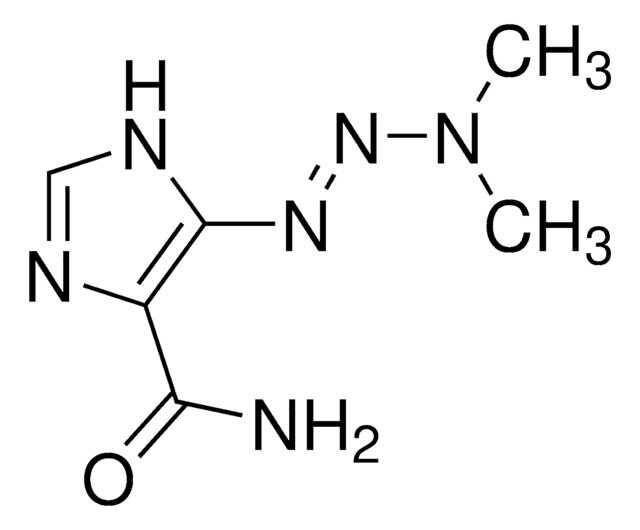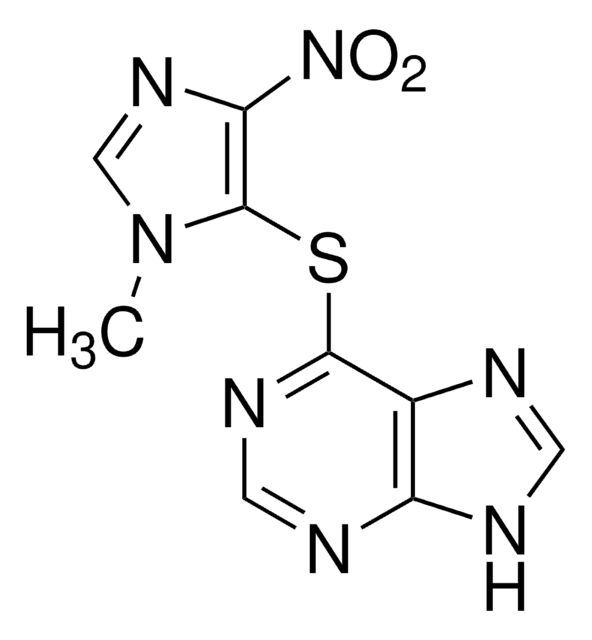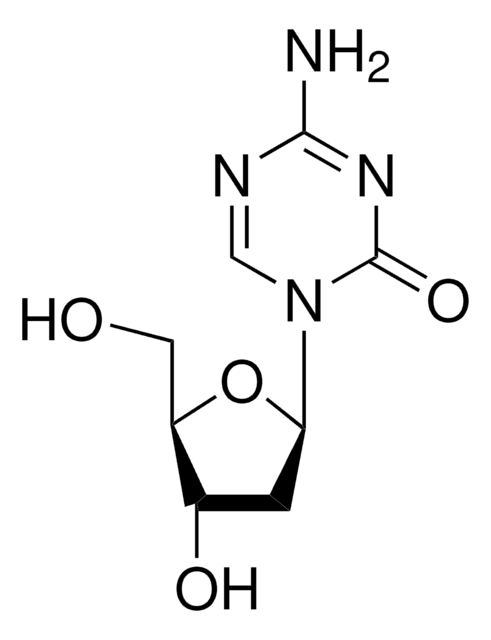D2390
Dacarbazine
antineoplastic purine analog
Synonym(s):
5-(3,3-Dimethyl-1-triazenyl)imidazole-4-carboxamide, DTIC
About This Item
Recommended Products
Quality Level
form
powder or crystals
solubility
1 M HCl: 50 mg/mL
antibiotic activity spectrum
neoplastics
Mode of action
DNA synthesis | interferes
storage temp.
2-8°C
SMILES string
CN(C)\N=N\c1[nH]cnc1C(N)=O
InChI
1S/C6H10N6O/c1-12(2)11-10-6-4(5(7)13)8-3-9-6/h3H,1-2H3,(H2,7,13)(H,8,9)/b11-10+
InChI key
FDKXTQMXEQVLRF-ZHACJKMWSA-N
Looking for similar products? Visit Product Comparison Guide
Application
Biochem/physiol Actions
Other Notes
Signal Word
Danger
Hazard Statements
Precautionary Statements
Hazard Classifications
Acute Tox. 4 Dermal - Acute Tox. 4 Inhalation - Acute Tox. 4 Oral - Carc. 1B - Eye Irrit. 2 - Muta. 1B - Skin Irrit. 2 - STOT SE 3
Target Organs
Respiratory system
Storage Class Code
6.1C - Combustible acute toxic Cat.3 / toxic compounds or compounds which causing chronic effects
WGK
WGK 3
Flash Point(F)
Not applicable
Flash Point(C)
Not applicable
Personal Protective Equipment
Choose from one of the most recent versions:
Already Own This Product?
Find documentation for the products that you have recently purchased in the Document Library.
Customers Also Viewed
Our team of scientists has experience in all areas of research including Life Science, Material Science, Chemical Synthesis, Chromatography, Analytical and many others.
Contact Technical Service












